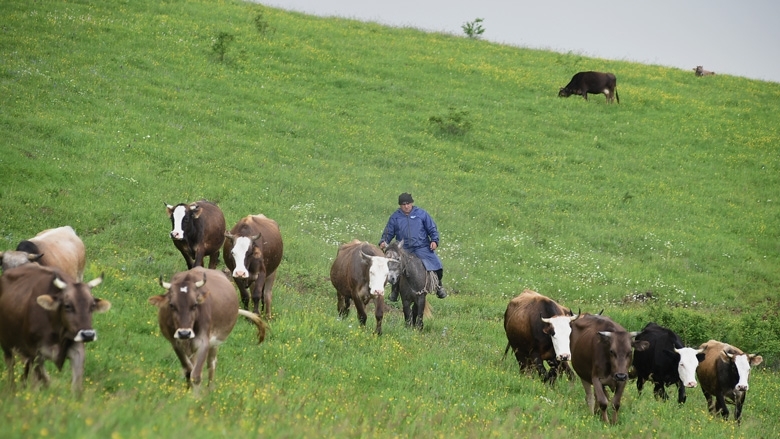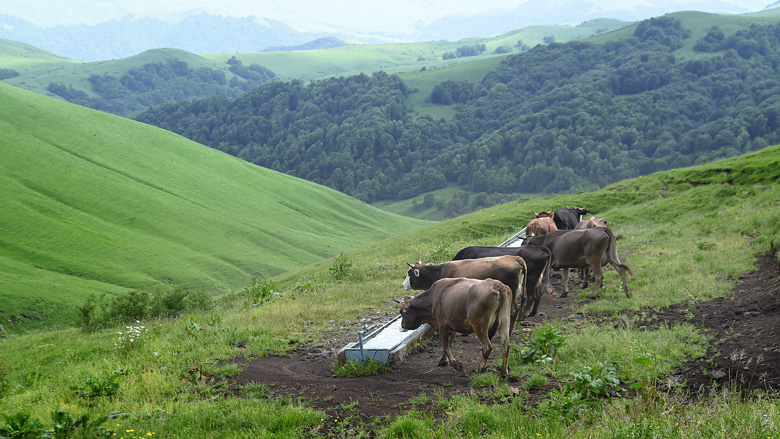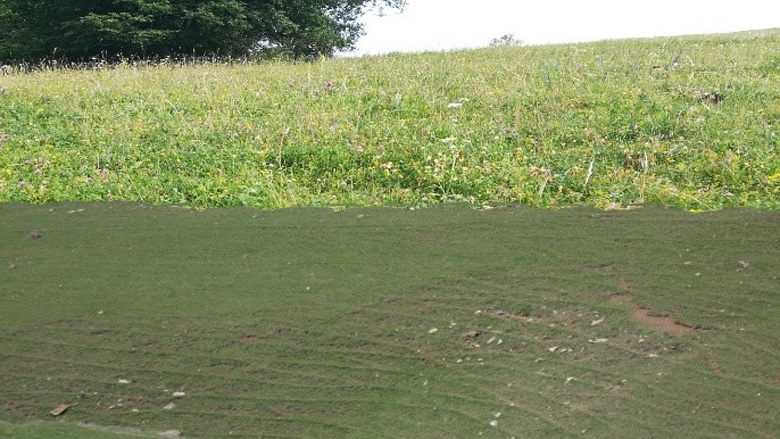Communities across Armenia are demonstrating that adopting sustainable livestock practices can increase household incomes while also protecting the environment. Although the country’s contribution to global greenhouse gas (GHG) emissions is relatively low, Armenia has committed to achieving neutral GHG emissions by 2050, pointing to the important role agriculture and grassland management play in reaching this ambitious goal.
Armenia’s alpine grasslands cover roughly 60 percent of the country’s total land area and are essential for its environmental and economic wellbeing. Grasslands can contribute to mitigating global warming, since they act as a carbon sink that capture CO2 from the atmosphere. Moreover, these grasslands serve as pasturage for the nation’s livestock - producing fodder for a vital sector of Armenia’s agricultural output.
Armenia recognizes the importance of protecting its pastureland. In its 6th National Report to the UN Convention on Biological Diversity - and in line with its National Target 4 (better protection of biodiversity habitats by minimizing their degradation) - Armenia highlighted the need to introduce sustainable land management approaches, given that pastureland degradation poses a significant threat to its natural ecosystems and livestock production.
In this landlocked country with a population of 3 million, where the agriculture sector accounts for 12 percent of GDP, threats to livestock and pastureland can significantly impact livelihoods. While productivity has grown substantially over the past decade, the large population of smallholders remains extremely vulnerable, with 26.4 percent still living in poverty.
Yields are far below their potential, and livestock productivity is hindered by the poor management and unsustainable use of pasture resources. The most common problems include severe overgrazing and the degeneration of the most accessible pasture areas, under-used remote pasture lands, the poor quality and shortage of winter feedstuff, issues related to animal health, and poor genetic resources.
These barriers could be overcome - and the sector’s full potential realized - by enabling sustainable management plans, improving market access, supporting the commercialization process, and enhancing employment opportunities in rural areas.
And this does not have to come at the expense of protecting the natural environment. The World Bank–financed Second Community Agricultural Resources Management and Competitiveness project (CARMAC 2) aims to improve the productivity and sustainability of pasture and livestock systems in targeted communities and to increase production in selected livestock and profitable agri-food value chains, while also strengthening public sector institutions.




